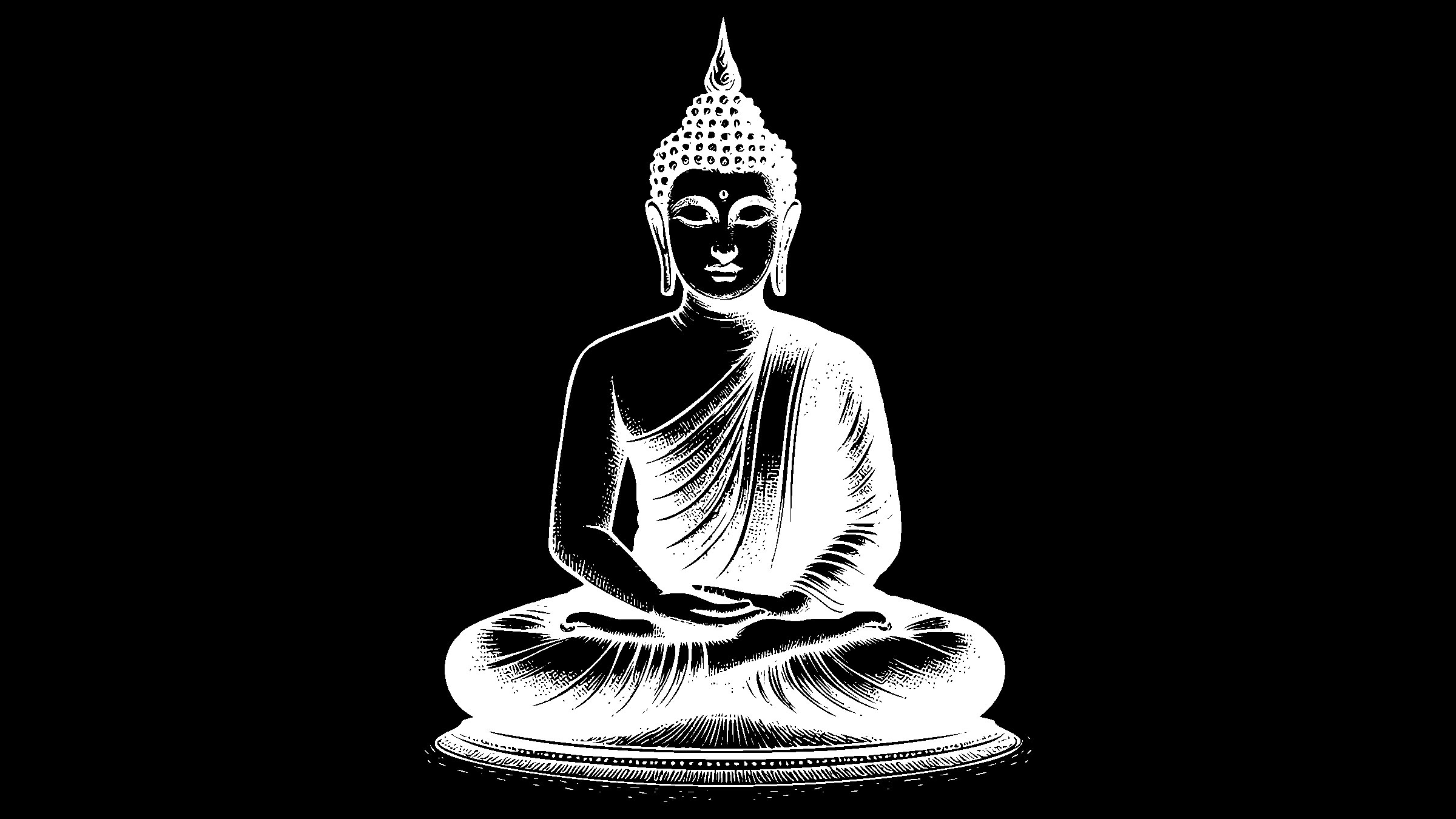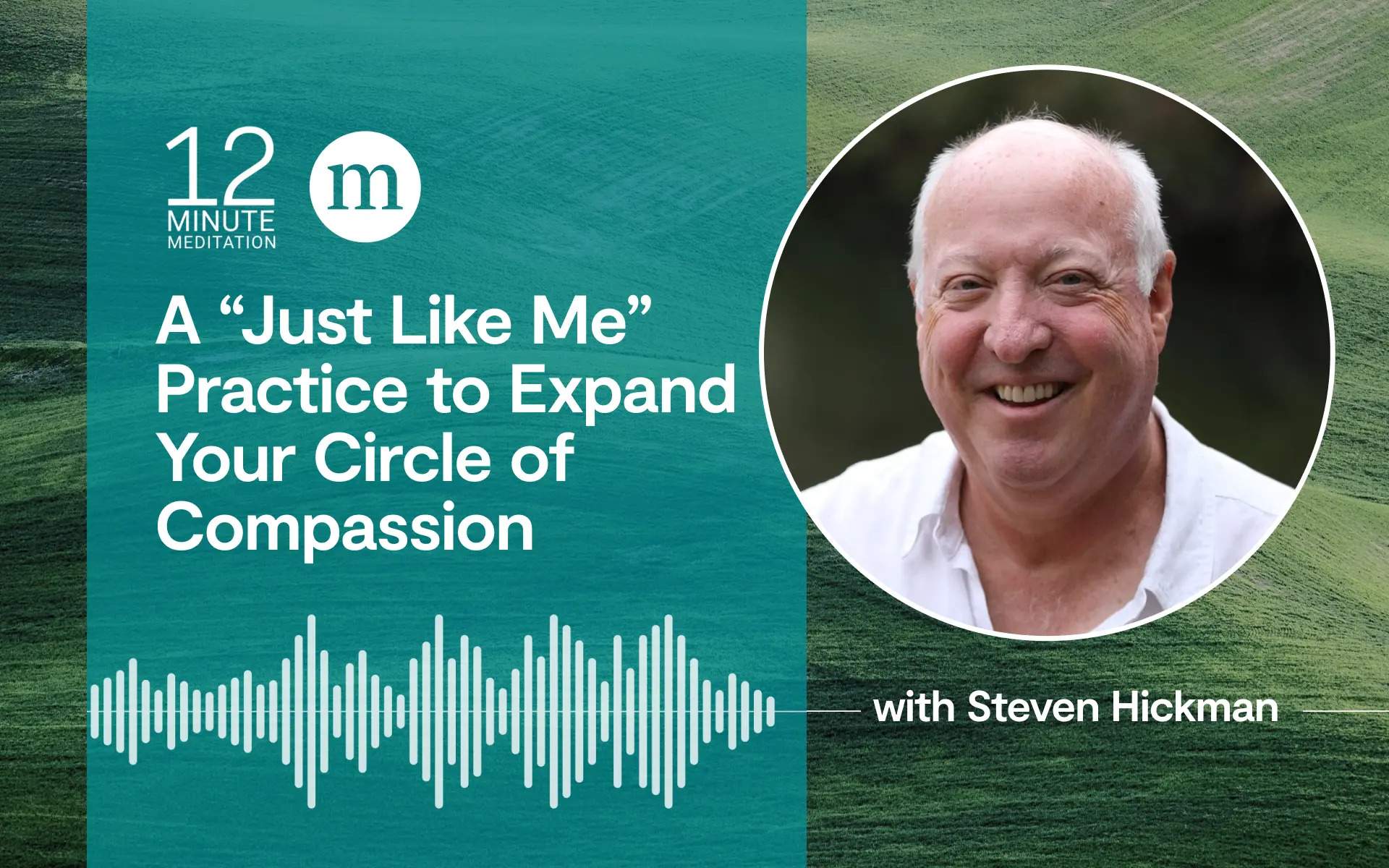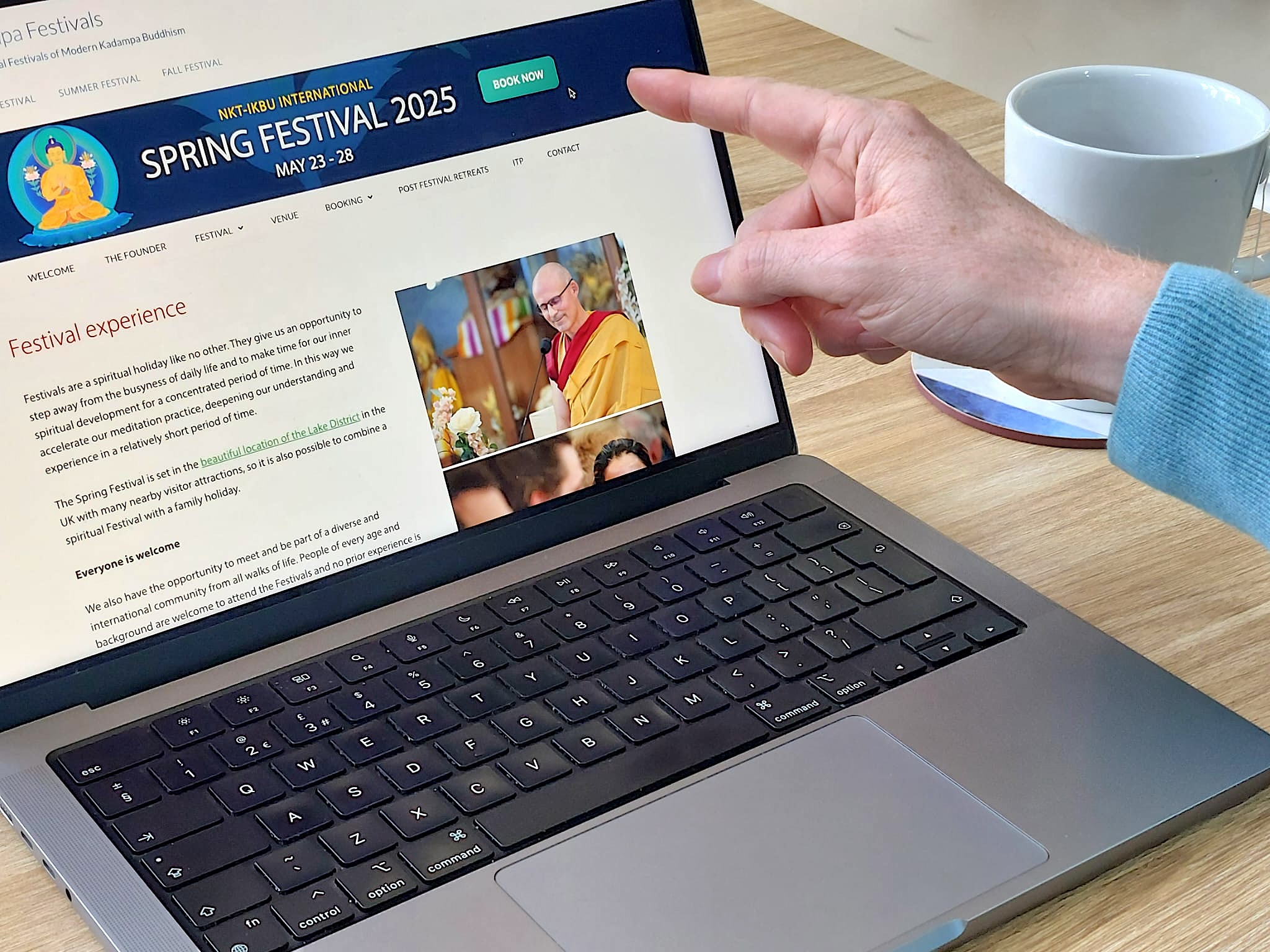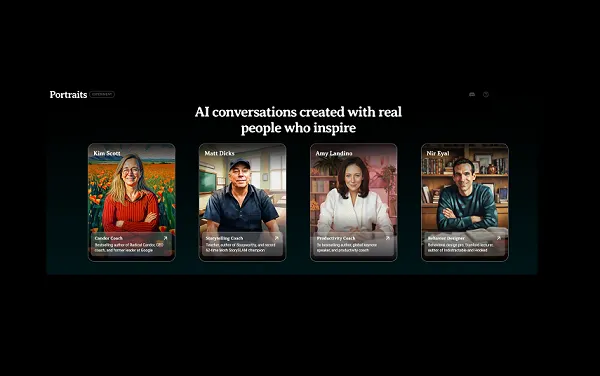How Realistic Is the Buddhism of ‘The White Lotus’?
Tricycle talks with scholars, teachers, and former monastics about the popular show’s depiction of the dharma. The post How Realistic Is the Buddhism of ‘The White Lotus’? appeared first on Tricycle: The Buddhist Review.

Set on the Thai island of Koh Samui, the third season of The White Lotus is chock-full of Buddhism. While the show nods to the spiritual tradition in its art, architecture, and the overall culture it seeks to represent, it is perhaps no more evident than in the season’s plot as each one of the finely crafted characters all wrestle with their own attachments, aversions, and defilements. For fans of show creator, writer, and director Mike White, this should come as no surprise, as White has often talked about his own on-again, off-again interest in Buddhism himself, explicitly referencing it in his earlier series, Enlightened. “I had a Buddhist self-help phase when I had a nervous breakdown in my 30s,” White tells IndieWire. “I use Buddhist concepts as a way to sort of organize my ideas.”
But how authentic does White’s version of Thai Buddhism actually come across? Tricycle talked with scholars, teachers, and former monastics about what the show got right and what details could have used a little more illumination.
***
There’s so much longing coming from The White Lotus: Season 3. Many of the characters are seeking meaning beyond samsara, even if they don’t know where to look. In one episode Timothy Ratliff is sent to interview the abbot of a temple where his daughter wants to spend a year learning to meditate. Tim goes in expecting to grill the monk, and comes out saying, ‘I think he’s the real deal.’ The abbot answers Tim’s question about death, explaining that it’s like a drop of water rejoining the ocean. This captures Buddhism’s transformation of our usual fear of death. I’m glad so many Americans will have heard this line. I hope it shakes people’s consciousness.
There is a storyline that strikes a discordant note to me as a native Thai. Mook, a health worker at the White Lotus, is having a flirtation with the security guard Gaitok. She’s impatient with what she deems to be his lack of ambition. At one point, Gaitok confesses that he’s a good shot, but he doesn’t have it in him to shoot someone. Mook urges Gaitok to get over that squeamishness. She says that violence is a natural part of life.
I gasped when this happened on-screen. It was such a breach of Thai culture! There’s no way someone of Mook’s background and education would think that. She exists within a Buddhist culture that sees nonviolence as strength. She would have been moved by Gaitok’s confession. Mook would have found Gaitok more attractive when he said that he doesn’t have it in him to kill.
–SUNISA MANNING, dharma teacher, Heart Sangha
Mike White, the series’ showrunner, has said that the theme of the first season was money, the second about sex, and the third and current season about spirituality. The show features shots of Buddha images and spirit houses, at peace in the landscape as the show’s characters wrestle in luxurious settings with their demons. One of the main characters, Piper Ratliff (Sarah Catherine Cook), tricks her family to come to Koh Samui so that she can get an interview with the abbot monk of a Buddhist monastery there. Her undergraduate spiritual seeking acts as a counter to the greed and hedonism of the rest of her wealthy Southern family. Does the show depict Thai Buddhism accurately? In a word, no. But that is quite clearly not the show’s aim. Instead, the show is an excellent satire on the hit-and-miss spiritual pretensions of middle- and upper-class Americans.
Mike White has said that Buddhism has influenced his writing, and we can see this in the ways in which the characters of The White Lotus are locked in their own identities and struggles. No vacation, no matter how luxurious or idyllic the location, can ever be a vacation from themselves. In the first episode, the Ratcliff family stubbornly refuse to relinquish their devices to the wellness director. Piper’s father, Timothy Ratliff (Jason Isaacs), is deeply attached to his self-image as a successful financier, and when an investigation by the government indicates that his days of wine and roses are over, he struggles with the loss of his cultivated self so keenly that he considers suicide and even killing his family. His wife, Victoria Ratcliff (Parker Posey), goes so far as to say that, if deprived of luxury at this point in her life, it simply would no longer be worth living. Victoria is such a believer in the finer things that she thinks that a single night for Piper in the (unrealistically pleasant) rooms of the island’s temple retreat center will disabuse her daughter at once of all her spiritual notions. Three middle-aged successful women taking a ladies’ vacation, which they dub a “victory tour” (Kate Bohr played by Leslie Bibb, Laurie Duffy played by Carrie Coon, and Jaclyn Lemon played by Michelle Monaghan), are seemingly in denial about their collective age, wishing to reclaim their carefree days as young friends. But they only end up reigniting the same old jealousies and suspicions amongst each other. All of the characters are locked, locked in the same old cycles and desires. The characters’ dramas take place against a backdrop of Buddha statues amidst tropical trees and flora. The statues sit gnome-like, surrounded by incense smoke and the slow chiming of bells, as if waiting to be discovered as a quiet call to an alternative. But it is not a call that these characters seem ready to heed.
 Photograph by Fabio Lovino/HBO
Photograph by Fabio Lovino/HBOAs in previous seasons, White seems most sympathetic to those characters who, despite their struggles, are at least open to alternative ways to break their own cycles. Piper Ratliff, despite seeming a bit of a stick-in-the-mud compared to her brother Saxon (Patrick Schwarzenegger), has the potential to break away from her family’s deep commitment to hedonism, what they call ‘good values’ and ambition. The troubled Rick Hatchett (Walton Goggins), trapped in his own self-narrative of a man who was driven to a morally dubious life by the murder of his father at a young age, is seemingly saved by some brief words from his meditation teacher at the resort (Shalini Peiris). She counsels him to ‘let go’ of his story and break free from samsara. Yet, as with all of White’s more sympathetic characters, one senses that any spiritual transformation away from habits of mind colored by a culture of intense personal pursuit will be far from simple. Even wellness therapy, even a retreat, even Buddhism itself can become yet another commodity. One wonders if Rick Hatchett, like his friend Frank (Sam Rockwell), who had already gone through [his own] Bangkok sexual journey to a period of spiritual stillness, will quickly revert to his old libertine ways.
Buddhism has long been a black box for Westerners for whom it is not their native religion, a box signifying any alternative to Christianity, to modernity, to capitalism, to hedonism, or whatever you like. In academic terms, it has been called “a contested social fantasy,” unmoored from the day-to-day drag of institutionalized religion. And yet Thai people’s attitudes to Buddhism are as varied as American Christians’ attitudes toward Jesus Christ. People visit temples and pray to the Buddha for health and wealth and success in exams and lucky lottery numbers. Temples are often used as something like public parks, daycare centers, or old folks’ homes. Some people read scriptures, some practice meditation or collect Buddhist amulets. But most people do not. Religious practice is often more communal than about personal growth, centering on the practice of tham bun, or making merit to improve karmic surplus. Yet the Buddha statues do still sit gnome-like day-to-day amidst the temple grounds, quietly imploring people to be more humble, more calm, more generous.
–DR. PAUL LEWIS MCBAIN, Thai Buddhism historian and lecturer at Thammasat
The depictions of Thai culture in The White Lotus struck me as thoughtful, informed, and sensitive. When it comes to the presentation of Thai Buddhist teachings, though, the show’s writers frequently miss the mark.
The show’s depiction of the Buddha’s nonviolence is the most accurate thing they have to say about Buddhism. In one scene, the brutality of Muay Thai boxing is juxtaposed with a voice-over of an Ajaan saying, “Remember this, every one of us has the capacity to kill. Buddhist scripture condemns violence in every form. Violence, aggression, anger stem from the same source: fear. The only good faith response is to sit with your feelings. Violence does spiritual harm to the victim and the perpetrator. Buddhists believe: always nonviolence.”
When meditation teachings are presented, they are superficial approximations of Pop Mindfulness. The depiction of Thai Buddhist philosophy, which stems from a particular lineage of Theravada Buddhist thought, ranges from the confused to the totally off-the-mark. The first really confused presentation of teachings comes from a retired criminal in Bangkok who moved to Thailand to live a life of extreme indulgence, then became world-weary and discovered Buddhism. He says, “Then I got into Buddhism, which is all about spirit versus form, detaching from self, getting off the never-ending carousel of loss and suffering.” When watching this episode, I initially thought this was an intentional parody of distorted Western understandings of Buddhism. What he says is a mix of Buddhist ideas (getting off the never-ending carousel of loss and suffering) with Western, Christian-esque ones (spirit versus form, detaching from self).
What to make, though, of the teachings of Luang Por Teera, a bhikkhu and supposedly an esteemed master of the Thai tradition, when he discusses Buddhism with one of the main characters?
The monk opens with his speech that would sound more at home in the works of Emerson or a European romantic author than a Theravadin Buddhist teacher. He diagnoses Western spiritual malaise as being rooted in disconnection from nature, family, and spirit, an assertion that manages to contain no traditional Theravada Buddhist teachings at all. Things get better when the monk shifts to a discussion of how the pursuit of pleasure leads only to pain, and the fact that the pain of life is not solved by running away from pain, all of which could actually come from the mouth of a Thai Ajaan.
When the tormented father and criminal financier, Tim, asks what happens after death, the monk offers something so at odds with Theravadin Buddhist teachings I was startled. “When you were born,” the Ajaan says, “you were like a single drop of water separated from the one giant consciousness. You are born, then you die to descend back into the water and become one with the ocean again. No more separated, no more suffering. One consciousness . . . death is a happy return, like coming home.”
According to Theravada teachings, when one dies, one is reborn according to one’s karma. Tim doesn’t have a happy return to the sea of universal consciousness to look forward to, but something much worse, given his lying, stealing, and the suicide he is then contemplating in a Lorazepam- and whiskey-fueled haze.
Later in the season Luang Por Teera gives a trite and superficial sermon that directly contradicts the Buddha’s teaching in a way that is recognizably what the Buddha called “wrong view”:
“Sometimes we wake with anxiety and edgy energy,” the esteemed Thai Ajaan says in oddly youthful and colloquial English. “What will happen today? What is in store for me? So many questions, we want resolution, solid earth under our feet. Take life into our own hands. We take action, yeah? Our solutions are temporary. They are a quick fix. They create more anxiety, more suffering. There is no resolution to life’s questions. It is easier to be patient once we finally accept there is no resolution.”
Does the show depict Thai Buddhism accurately? In a word, no. But that is quite clearly not the show’s aim. Instead, the show is an excellent satire on the hit-and-miss spiritual pretensions of middle- and upper-class Americans.
The Buddha’s actual teachings, of course, while agreeing that anxiety and confusion torment us, would point out that the solid ground we seek is the dharma, and that the sure guidance it offers—and, ultimately, the freedom of nirvana—is the resolution to all of life’s questions. The White Lotus presents the Buddha’s solution as mere resigned acceptance of life as it is, which although a staple in some corners of Western pop-Buddhism, is very far from the dharma I’ve heard from dozens of Thai Ajaans over the years.
There is one very Buddhist part of the show, however: its plot. The characters are enmeshed in greed, hatred, and delusion, which are known as the three poisons in Buddhism. It is also remarkable how pervasive the breaking of the five traditional Buddhist precepts are in their behavior. The five precepts, whose disregard is said to bring harm and regret, are:
1) not killing
2) not stealing
3) not lying
4) no sexual misconduct
5) not taking intoxicants
The characters murder, steal, lie, engage in sexual misconduct and abuse, alcohol and drugs, often all within the space of a few minutes.
For a couple of the many examples: Tim Ratliff became involved in fraud and embezzlement (greed), and is now losing his mind from fear of the consequences (hatred), which he is escaping in sedatives and whiskey (delusion). It was stealing that landed him in this situation (second precept), and his lying (third) and substance abuse (fifth) is prolonging the crisis. His son, Saxon, driven by greed and shallow egotism (delusion), leads himself and his brother into trouble with his obsession with unethical sexual conquest (fourth precept), fueled by alcohol and drugs (fifth), which ultimately culminates in incest (fourth). And so on.
Much of the suspense of the plot is animated by a very Buddhist question: Will the characters give in to violence or not? Will Tim kill himself, or even his whole family? Will Greg, the wife-killer in hiding, kill Saxon (who slept with his wife) or Belinda (who knows of his crime)? Will Rick kill the man he believes murdered his father? Will Gaitok succumb to Mook’s pressure to be ambitious and violent for the sake of his job advancement?
Gaitok and Mook’s story is a short Buddhist drama embedded in the more flashy sensationalistic narrative arcs that surround them. Gaitok is a gentle security guard who dislikes violence. He is infatuated with Mook, a beautiful girl who has more of a thing for the burly tattooed bodyguards of the hotel owner. Gaitok attempts to be more aggressive and get a promotion to please Mook, but he confesses to her that he thinks violence is wrong due to its condemnation by the Buddha. In the end, Gaitok thus wins career success and the admiration of Mook, but her disregard for his true nature and Buddhist morality presages suffering down the road for both of them. The White Lotus mostly gets Buddhist teaching and practice wrong, but in its plot it delivers an effective Buddhist morality tale. This might not be a testimony to the writer’s grasp of Theravada Buddhism, but it does suggest the intuitive grasp of dharma—the truth of life—which any good writer should possess.
–MATTHEW GINDIN, journalist, meditation teacher, and former monastic
Having journeyed to Thailand twice—as a Buddhist teacher and again as a spiritual pilgrim—I can only offer a limited reflection on the accuracy of how the country is portrayed in Season 3 of The White Lotus, as the episodes largely unfold within the confines of a luxurious all-inclusive retreat in Koh Samui, a setting that lies well beyond my personal experience.
Mike White, the brilliantly insightful creator of the series, accurately portrays how Western tourists often treat Thailand as a personal amusement park. During our travels, we witnessed countless visitors exploiting the country for sex tourism, [with] reams of drunken Australian backpackers [spending] their evenings littering the streets with beer cans and food containers. The rampant intoxication—not just at nightlife gatherings but even at religious sites—resulted in treating Thai courtesies and customs as if they were mere suggestions rather than societal realities. In short, many tourists embodied the very essence of colonialist behavior.
While I appreciate the show’s nuanced storytelling, I do wish at times it would delve more deeply into the lived experiences of local Thai people, who are frequently relegated to the periphery as hotel employees. Still, I believe the series fundamentally aims to chronicle the misadventures of the wealthy, entitled, and existentially adrift. And for that, it’s to be applauded.
–JOSH KORDA, Buddhist teacher and author
The main piece of the Buddhism plot that I think is realistic, although extremely heightened, is the earnest wish for the young daughter, Piper, to explore different values from her family’s, and her mother’s reaction to that wish. Although much of the dialogue and acting is for dramatic effect, it makes sense that the mother feels hurt and defensive that her daughter is rejecting the values she was inculcated with growing up as a wealthy North American from North Carolina. There is often intense social pressure from family members to preserve traditions across generations, and it can take significant strength of will to resist that pressure and ultimately gain acceptance for making different choices.
The daughter’s embarrassment over her mother’s behavior at the Buddhist temple feels very real to me, especially because Piper is not part of the community yet and is just learning herself. She wants to do everything ‘right’ and behave correctly in the temple, showing right effort. But she cannot count on her family to do the same. I have heard many stories from longterm visitors to Thailand involved in Buddhist communities, as well as from foreigners who have ordained, describing similar challenges they face with their natal families.
The moment in the season that felt the most authentic for me was when Piper’s father begins talking to the abbot of the Thai temple Piper visits. The father first wants to know why young Western people come to live in this temple. This older monk has the demeanor of a Thai senior monk who is friendly and well-liked. It is unusual but not unheard of for the monk to speak such good English. The monk, Luang Por Teera, explains that these young people feel their lives are empty of any real happiness or fulfillment. They are looking for some deeper kind of joy than what money, status, and power can bring, and they become disenchanted with a never-ending cycle of trying to fulfill their desires. In Chiang Mai, I have heard monks explain this dynamic to Western tourists. They often contrast the life of Buddhist monks with the everyday lives of Western tourists and argue that a life lived according to Buddhist principles is going to give people the tools necessary to step off the cycle of desire, thus making them better equipped to deal with life’s hardships and ultimately lead to increased happiness.
Visually, the scenes in the temple sometimes resonate with temples I have visited and sometimes seem unusual. The first scene at the temple, when Piper and her younger brother investigate it from the outer gates, resembles a typical temple where Thai laypeople would come to make merit. In the second scene, Piper goes to make an appointment with a secretary or assistant monk inside the temple. This monk is working on a nice laptop in a big office. It all feels a little too lush and sophisticated for most temples, which typically don’t have these kinds of resources in their administrative offices.
Next, Piper and her younger brother attend a dharma talk, meditation session, and then eat an evening meal at the temple. This is realistic, as some temples with meditation centers would hold a retreat in English for foreigners. Some temples even let foreigners conduct the retreat in nonwhite colored clothing. This would be the case only for centers that are just for foreigners who stay for a ten-day group meditation retreat. But centers that are mixed Thai and foreign would compel the foreigners to also wear white clothing only. Piper wears a white dress, but it is not modest enough for a temple, barely covering her shoulders, and would be considered inappropriate. Also, some centers allow foreigners to eat dinner on their retreat—but only ones that are allowing adaptations for foreigners. Their eating in silence follows typical protocol on a meditation retreat.
The accommodations the brother and sister stay overnight in, within the temple, remind me of a small wooden house, or kuti, I stayed in once at a forest temple in northeast Thailand. Sometimes temples have houses laypeople have built and donate so they can have a place to stay in the temple. But usually, you would not have females and males in the same house or even the same area of the temple, so the fact that she could visit her brother inside his room was very unrealistic and inappropriate.
This season of The White Lotus showcases the themes of violence and restraint. One of the Thai staff characters debates the value of violence, while Piper’s father has thoughts of violence against himself and his family. Luang Por Teera, in a speech to the young foreigners in his program, discusses how although it is our nature to be violent, we can overcome that, and this is part of what Buddhism teaches. Although Buddhism is certainly against violence in practice, with the first precept being to “abstain from taking life,” Buddhist concepts of human nature do not necessarily include violence. Instead, Buddhists are more concerned with the mind and our natural state being the monkey mind—or an untamed mind that wanders, distractedly, from thought to thought, which can cause us and others harm.
Much of what the senior monk, Luang Por Teera, says in his dhamma talks, is in direct relationship to the plot. This can make some of the phrasing awkward. When the characters are in turmoil, the monk says in his preaching that there is no resolution to life’s problems, alluding to the teaching that we must accept our circumstances and the consequences of our actions, and let go. However, instead of solutions to our problems, Buddhists would tend to reach for vocabulary related to suffering and the four noble truths. Instead of no resolution to problems, the monk could more accurately say, ‘There is no end to suffering.’
The most off-the-mark plotline is that Piper hopes to join this temple community on the island of Koh Samui, after she graduates, for a yearlong stay, in what she variously calls a ‘meditation program’ and an ‘intensive.’ Thai temples do not offer anything like a meditation intensive and nowhere near to a year in length. Meditation centers specialize in creating opportunities for meditation retreats, which vary in length from a few days to about a month.
 Photograph by Courtesy of HBO
Photograph by Courtesy of HBOIf she were really interested in Buddhism, she could join one of the more realistic phenomena of meditation retreats, for a short period. She could also request to live in a temple that practices meditation for a few months, if she first became acquainted with the people there. However, there is no option for such a long ‘meditation program.’ She would need to get a visa to stay for that length of time, and Thai temples are not set up to provide visa support for foreign laity.
The most realistic option would be for her to consider ordination as a precept nun or female monk and stay at a temple with other ordained women. Nowhere in the show does the topic of ordination arise. If she were going to stay in Thailand for a year to practice Buddhism, she would need to demonstrate much more commitment—specifically ordination. Then she could potentially apply for a religious visa as an ordained person. This would be tricky for a female character. A male character could much more easily ordain. The details of female ordination in Thailand are difficult to grasp quickly. I lecture on this topic, and it takes some time to get my students to a level of basic understanding of the situation. These details as well as visa requirements do not make for compelling entertainment, so I understand why this is not part of the show. However, the situation that has been created for the show does not make sense within the possibilities for foreign engagement with Thai Buddhist temples.
The second most unfeasible part of the show is the abbot’s description of what happens after we die, in response to a question from Piper’s father, who is contemplating suicide. The answer the monk gives, that we are like a drop of water, and dying would return us to a feeling of wholeness as if entering a big ocean, is relieving to the father, making him feel it would be OK to kill himself. This is not only very inaccurate, but Buddhists would never make someone feel OK about doing violence to themselves—any kind of craving, including the craving for nonexistence, is an obstacle within Buddhism. What the monk describes reminds me more of Hindu ideas of the afterlife than the Theravada Buddhist view of rebirth. I have heard monks describe the Buddhist vision of the afterlife to foreigners, and they necessarily describe the concepts of karma and rebirth. Even though rebirth may sound unfamiliar to foreigners, at least having the monk respond about how our actions in this life affect our death experience would be more realistic than the image this monk offers of ourselves as drops of water returning to a larger whole.
–BROOKE SCHEDNECK, associate professor in the department of religious studies at Rhodes College, author of Living Theravada
I have heard of The White Lotus, but I don’t have a TV so have never watched it. I did spend a totally wonderful three weeks on Koh Samui back in 1980—back before there was an airport there, back before you could even buy a T-shirt with Koh Samui on it. But that’s all I can contribute.
–LEIGH BRASINGTON, teacher and scholar, insight meditation
***
Bonus: Teacher and author JACK KORNFIELD on the quotes from the show’s fictional monk, Luang Por Teera
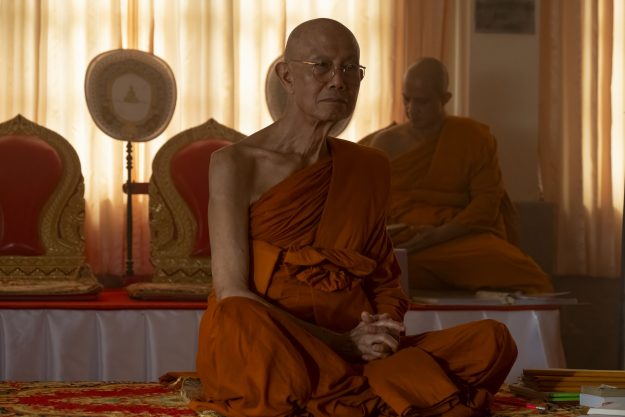 Photograph by Fabio Lovino/HBO
Photograph by Fabio Lovino/HBO
“Identity is a prison.”
We have lots of identities and roles that are always changing. When we are with our parents, we are a son or daughter. When we are with our siblings, we are a brother or a sister. When we are with our children, we are a parent. Our identities as a parent or a friend, as an American or a Thai, as a teacher or a student, as a healer or rebel are always changing. Clinging to identity is the prison.
“When you’re born, you are like a single drop of water, flying upward, separated from the one giant consciousness. You get older. You descend back down. You die. You land back into the water, become one with the ocean again. No more separated. No more suffering. One consciousness. Death is a happy return, like coming home.”
This is not the teaching one would hear in Thai Theravada Buddhism. It is more like the Mahayana teachings you would hear from Thich Nhat Hanh. The Thai tradition strongly believes in rebirth, and that your next birth follows the karma you have made.
“Everyone run from pain towards the pleasure. But when they get there, only to find more pain. You cannot outrun pain.”
Practicing in the monastery teaches you to not be afraid of pain, and not be afraid of pleasure.
“Remember this: Every one of us has the capacity to kill. Buddhist scripture condemns violence in every form. Violence, aggression, anger stem from same source: Fear. The only good faith response is to sit with your feelings. Violence does spiritual harm to victim and to perpetrator. Buddhists believe always nonviolence.”
This is beautiful teaching.
“If you always choose the short stick, is it bad luck? Are you always life’s victim? Or are you doing it to yourself?”
The Buddha taught that the reach of karma is difficult to understand. Here the monk seems to be asking the visitor to look into their own actions and see if they are contributing to the difficulties and suffering in their life. The monk, like a therapist, is asking a good question.
“Sometimes we wake with anxiety. An edgy energy. What will happen today? What is in store for me? So many questions. We want resolution, solid earth under our feet. So we take life into our own hands. We take action, yeah? Our solutions are temporary. They are quick fix. They create more anxiety, more suffering. There is no resolution to life’s questions. It is easier to be patient once we finally accept there is no resolution.”
It does feel authentic to the Thai Forest Tradition. Ajahn Chah laughed often about how “it’s uncertain.”
⬥
This article will be updated with more responses as we receive them.

 Tekef
Tekef 








